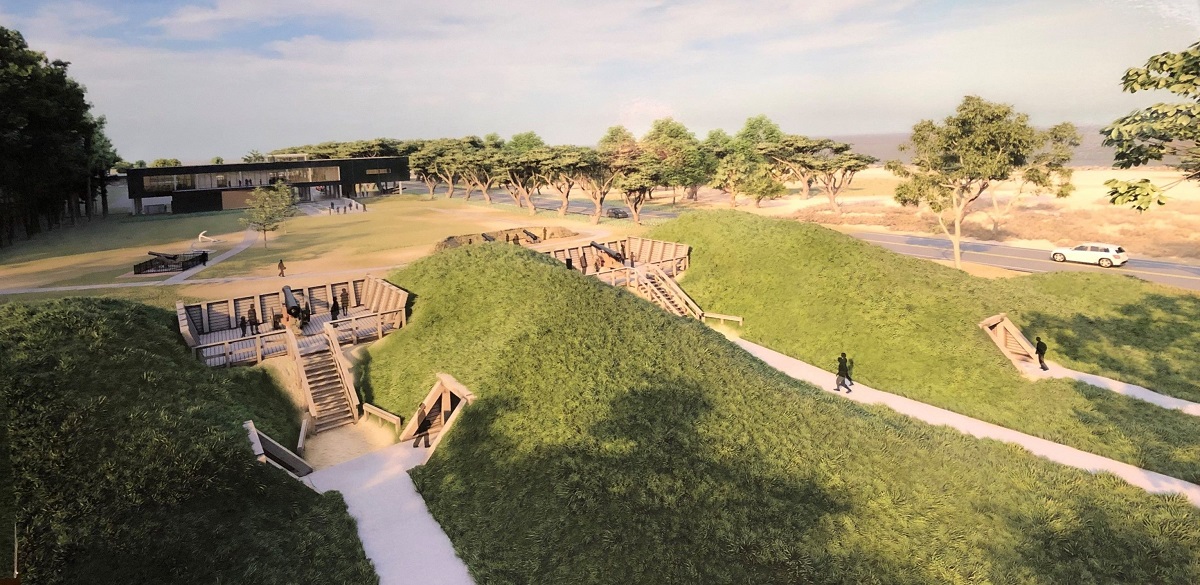
With funding now secured, work can move forward on new facilities at Fort Fisher State Historic Site in Kure Beach.
Budgeted at $25.5 million, the project includes a new interpretive center for museum exhibits, which will be almost three times larger than the 1965 building in use today, and a new conservation lab for the Underwater Archaeology Branch of the Office of State Archaeology.
Supporter Spotlight
In addition, The Friends of Fort Fisher Inc., the nonprofit that supports this historic site, plans to begin a capital campaign June 11 to fund the reconstruction of the site’s earthen ramparts demolished during World War II for the construction of an airstrip.
North Carolina Historic Sites, a group of 27 historic sites under the North Carolina Department of Natural and Cultural Resources, announced Tuesday that the full funding amount for the project had been secured, most of which was appropriated over several budget years.
Fort Fisher kept the North Carolina Port of Wilmington open to blockade-runners supplying necessary goods to Confederate armies inland until the last few months of the Civil War, when it fell after a massive federal amphibious assault Jan. 15, 1865, according to the state Historic Sites. The site also played a part during World War II.
The Friends group has played a large part in the yearslong planning process and in obtaining funding for the new facilities, officials said.
“This funding, secured in no small part through the amazing work of the Friends of Fort Fisher and our site staff, will provide a powerful opportunity to tell a more inclusive and transformative story of this land and all that it witnessed,” said Michelle Lanier, director of the Division of State Historic Sites, in a statement.
Supporter Spotlight
Historic site manager Jim Steele explained that the new interpretive center and restored earthworks will be welcome additions to Fort Fisher.
“The exhibits will cover Fort Fisher history in a broad, all-inclusive manner and feature something for every visitor,” Steele said in a statement. “Visitation at Fort Fisher now exceeds one million visitors a year, and it is time for facilities that can accommodate such crowds and for historical interpretation that sets new standards in museum exhibits and scholarship.”







